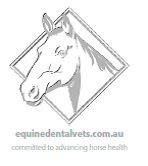 When should my horse have his first dental exam?
When should my horse have his first dental exam?
It’s a common enough question in the horse industry and, while many people will actually offer an opinion, they may not have taken the time to become well informed.
In this article, Equine Dental Vet Dr Shannon Lee answers this question and explains why, when it comes to dental care, you need to monitor, care for and manage your young horses from a very early age
Horses differ from humans in many ways. For example, did you know that young horses are actually born with teeth or that they erupt into the mouth during the first week of life?
As a result of this, and the difference in the anatomy between a horse’s jaw and a human’s, foals begin to wear their teeth right from that first week of life, developing sharp points of enamel within just a few months that begin to ulcerate the cheeks causing pain and discomfort.
The answer to the question “when should my foal have it’s first dental?” is, of course, dictated by multiple factors. However, a short exam close to birth to check for developmental abnormalities is the ideal.
With some instruction from your equine dental vet, this examination is something you may be able to conduct yourself. Certainly, with the advent of modern phones and cameras, you may also be able to seek the advice and support of your Equine Dental Vet (EDV) remotely.
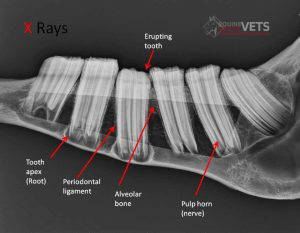
Congenital abnormalities
The most common abnormalities seen in foals (and often the most serious) include a mismatch in the length and development of the jaws – brachygnathia and prognathia are the correct medical terms describing the conditions that most of us call parrot mouth and sow or monkey mouth. These conditions are determined by the horse’s genetics and vary in the degree of severity. They are, however, lifelong conditions which require ongoing care and management.
Treatment of these conditions needs to be implemented at a very young age (around three months of age). There are several treatment options available and the choice will depend on the severity of the problem, your budget and ability to manage the care involved.
The simplest and most cost-effective form of treatment is to prevent the development of overgrowths on the cheek teeth. This gives the developing jaw the best opportunity to achieve it’s maximum length and, therefore, minimises the symptoms long-term. Achieving this requires several visits during that first year of life and a similar number of visits each year after that.
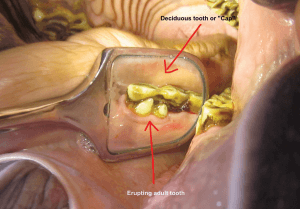
inspect the young horse’s mouth thoroughly. In this photo, you can see how the
adult tooth is pushing on the decidious tooth or ‘cap’ above it as it erupts.
Photo courtesy Advanced Equine Dentistry
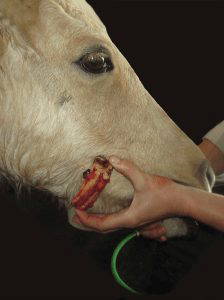
this image of a cheek tooth extraction shows. Photo Courtesy Advanced Equine
Dentistry.
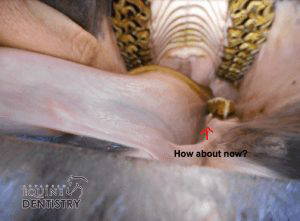
ankylosis quite early in a
young horse’s development.
Ankylosis is the fusion
between the tooth and it’s
bony socket, and it is a
problem because it makes
the complete removal of the
affected tooth much more
difficult. This is another
good reason to remove them
as early as possible. Photo
courtesy Advanced Equine
Dentistry.
Many of these young horses are bred to be ridden or driven and this is an important reason why a detailed dental examination from your equine dental vet at around 6-12 months of age is ideal.
If we look at the Australian Dental Association or ADA guidelines for dental care of children, they recommend a dental examination during the first year of life. They stress the importance of carefully examining each child in as stress- and pain-free manner as possible to allow early and accurate identification, and correction of problems without the development of fear.
I mention this because it is very good advice from a reputable group of professionals who are trained to have an excellent understanding in their field. Yet, does everybody follow this advice? Many people still choose to ignore it or follow the advice of less knowledgable individuals. So, how does this relate to the young foal?
Wolf teeth
Many of you will know a large number of the horses bred each year develop wolf teeth – the remnant seventh cheek tooth, that has begun to disappear through evolution of the horse.
Wolf teeth erupt in a foal’s mouth between six and 12 months of age. They vary enormously in size, shape, location and even in whether they are present at all. Many horse owners confuse wolf teeth, which are found close to the cheek teeth, with canine teeth because of the similar names. However, the two types of teeth are very different.
What you may not realise about wolf teeth, is that, often, these teeth undergo ankylosis quite early in a young horse’s development.

ankylosis quite early in a
young horse’s development.
Ankylosis is the fusion
between the tooth and it’s
bony socket, and it is a
problem because it makes
the complete removal of the
affected tooth much more
difficult. This is another
good reason to remove them
as early as possible. Photo
courtesy Advanced Equine
Dentistry.
Ankylosis is the fusion between the tooth and it’s bony socket, and it is a problem because it makes the complete removal of the affected tooth much more difficult.
To illustrate this point, imagine that I have just asked you to remove a fence post that has been buried deep in the ground for many years. Now, compare this with me asking you to remove a post that’s simply sitting in a newly dug hole. You can appreciate that achieving the first request will be difficult, may not be possible without breaking the post and is likely to take far longer than the second scenario.
This illustrates why ankylosis is such a problem in relation to the removal of wolf teeth and why it is generally best to remove these teeth as close to eruption of the tooth as possible, i.e. at around 6-12 months of age.
So why, you ask, should they be removed?
All teeth contain nerves and this includes wolf teeth. Because at 6-12 months of age, it is generally not possible to determine a horse’s future (i.e. whether the horse will be ridden in future), removing these teeth eliminates them as a training problem by preventing pain. The pain occurs when the bit makes contact with these teeth, stimulating the nerve. Too visualise this, imagine being hit in the tooth by someone using a teaspoon. Common signs associated with this are mild head carriage issues that are often intermittent, such as a head toss or head flick (more likely during a a transition). Wolf teeth can also become mobile due to processes associated with the eruption of adjacent adult teeth.
Sharp points and ulcers
Moving on to the welfare implications of caring for young horses, young grazing horses will begin to ulcerate their cheeks as young as the first few months of life. This leads to constant moderate pain; pain which can be prevented.
The young horse’s education
Here is a quote from well-known horse trainer, educator and rider Dan Steers of Double Dan Horsemanship on the education of young horses:
“The right start is vital for your horse’s foundation. A horse’s education is like the schooling of a child – it’s important that no steps are missed.”
How often do you hear of situations where people leave important steps, like appropriate dental care, out of the equation or add it in at an inappropriate time? You may get away with it, but what barriers or hurdles gave you created for the future education of that horse?
Horses do not respond to pain in the way that we as humans might, but they do feel pain in the same way we do. The difference is in how they express it. Because they are a prey species, their behaviours are designed to protect them by making it harder for a potential predator to detect signs of weakness, illness or injury.
The mouth of a young horse is a very active place during the first few years of life. Teeth are developing and erupting into the mouth, whilst other teeth are being shed to make way for new adult teeth. With an average of 24 deciduous or baby teeth to shed, and 36 to 44 adult teeth to erupt, there is a lot of activity and, consequently, plenty of opportunity for things to go astray.
When it comes to the young horse’s education, failure to properly address dental care prior to beginning the mouthing process can lead to horrific injuries (see picture). When you consider there is absolutely no need for this to occur, you can see why such injuries are so upsetting for owners, veterinarians and, ultimately, the horse.
Again, looking for thoughts outside our own, we asked veterinarian and competitive dressage rider Dr Gill Rickard to share her thoughts on the training of young horses:
“Regardless of the future plans for a young horse or pony, what happens in the early years will definitely affect the success of those plans. So, my advice is: Manage the young horse’s physical and mental health as best as possible.
“Daily training should occur in a patient, progressive way. Any equipment used on the horse, especially the bit, should be fitted carefully, be clean and be as mild as possible. Naturally, the young horse’s teeth should be examined by an Equine Dental Vet prior to first bitting and then at least every six months.
“The young horse’s teeth change so much that many training issues can start because of a sharp point, a cap coming off or a cheek ulcer. Unresolved, these issues can lead to habitual teeth grinding, jaw crossing or flopping tongue that limit the horse’s long-term performance. Be observant and never assume the horse is just being difficult. It needs an Equine Dental Vet to look in its mouth with a light, a mirror and sedation, to make a professional diagnosis and then to treat it.”
There you have it
Hopefully, this article on the subject of young horses, the timing and importance of their first dental has helped to provide you with a better understanding around the issue and prompted you to ask an Equine Dental Vet for advice.
If you would like further information or to speak with a qualified Equine Dental Veterinarian, you can do so by visiting www.equinedentalvets.com.
Search
Recent Articles
- The Good, The Bad and The Ugly of Coaching
- Does your horse need more energy, especially when competing?
- Grade 1 International Para Dressage Rider Di Green- Why Lexi Needed a Year Off
- Louise Blanch – Driving Towards New Horizons with the Continued Support of the Para Equestrian Foundation.
- Kissing Spine – Prevention or Cure?
Categories
- Advice Hub
- Athlete
- Carriage Driving
- Dentistry
- Dressage
- Endurance
- Eventing
- Farrier
- Featured
- Featured Horse Ads
- Featured Posts
- Horse Racing
- Horse's Mouth
- Horseball
- Hunting
- Le Trec
- Leisure Riders
- Mounted Games
- Nutrition
- Polo
- Polocrosse
- Reining
- Rescue & Rehabilitation
- Show Jumping
- Showing
- Tack Room
- Team Chasing
- The Pony Club
- Therapy
- Training
- Vaulting
- Veterinary




